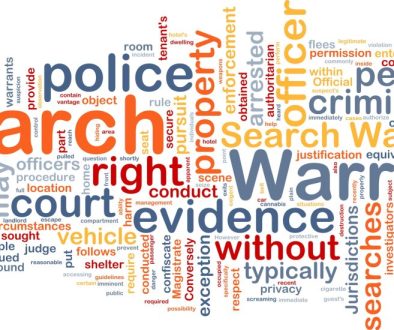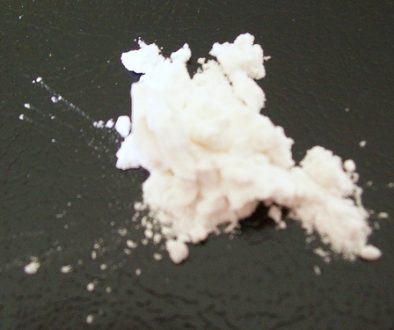Drug Classes, Schedules, & Maximum Sentences in Pennsylvania
How The Federal & State Government Classify Drugs
The federal government categorizes controlled substances into five classes: narcotics, depressants, stimulants, hallucinogens, and anabolic steroids. While controlled substances may differ in class, they all have the potential for abuse and so the federal government along with all states such as Pennsylvania and New Jersey have an interest in enforcing there use and misuse.
In addition for the potential for abuse most controlled substances can produce either a physical or psychological dependency. Physical dependency can range from mild unpleasant feelings to life threatening reactions. Psychological dependency is the “need” or “craving” for a drug which can last much longer and is the primary reason why a person relapses into a drug addiction. Addiction is the compulsive behavior for acquiring and using a drug which becomes the most important activity in the user’s life.
Drug Classes
Narcotics
Narcotics are also known as opiates and are substances that dull the senses and relieve pain. Examples of narcotics include heroin, OxyContin, Vicodin, Codeine, Morphine, Methadone, and Fentanyl. Common street names for narcotics include smack, junk, oxy, oxycodone, and OC. Narcotics come in various forms including tablets, capsules, skin patches, powder, chunks in varying colors (white to shades of brown and black), liquid form for oral use, injections, syrups and even lollipops.
Drug Schedules & Narcotics
Narcotics can be swallowed, smoked, sniffed, or injected. Narcotics are controlled substances that vary from schedule I to schedule V depending on their medical usefulness, abuse potential, safety, and drug dependency profile. A narcotic like heroin is a schedule I drug because it has no medical use in the United States. Narcotics can reduce tension, anxiety, and aggression with the side effect, however, of drowsiness, the inability to concentrate and apathy.
Stimulants
Stimulants speed up the body’s systems and this class of drugs includes amphetamines (Adderall and Dexedrine), methylphenidate (Concerta and Ritalin), and diet drugs (Didrex and breludin). Stimulants also include methamphetamine, cocaine, and methcatinone. Street names for stimulants include coke, crank, snow, speed, uppers, and ice. Stimulants come in a variety of forms including pills, powder, rocks, and injectable liquids. Stimulants can be swallowed, smoked, snorted, injected, and can produce a sudden sense known as a “rush” or a “flash.”
Drug Schedules & Stimulants
Stimulants produce a sense of exhilaration, improved mental and physical performance, increased activity, reduced appetite, and extend wakefulness for a prolonged period of time. Taking large doses and or consumption without doctor’s supervision can cause dizziness, tremors, headaches, flushed skin, excessive sweating and vomiting. A stimulant such as cocaine has no medical use and are therefore classified as Schedule I drugs. Some stimulants, however, like tobacco and caffeine don’t require a prescription, obviously, but can non-the-less be addictive.
Depressants
Depressants will put you to sleep, relieve anxiety, muscle pain, and prevent seizures. Examples of depressants include Valium, Xanax, Halcion, Ativan, Klonopin, Restoril, Rohypnol. Rohypnol is also known as the “date rape drug” and is not manufactured or legally marketed in the United States. Other depressants include Ambien and Sonata. Common street names for depressants include barbs, benzos, downers, roofies, tranks, and yellows. Depressants come in a variety of forms including pills, syrups, and injectable liquids. Depressant, again, can relieve anxiety, put you to sleep, and relieve muscle pain. A side effect, however, of depressant is amnesia, reduced reaction time, impaired mental function, and judgement.
A depressant such as Xanax (alprazolam) is Schedule IV drug while Valium is Schedule IV drug. Both of these drugs therefore have accepted medical uses and have much less addictive qualities than drugs like cocaine and heroin.
Hallucinogens
Hallucinogens are the oldest known group of drugs and have the ability to alter human perception and mood. Hallucinogens can be produced synthetically in laboratories and are also found in plants. Common street names for hallucinogens include acid, mushrooms, shrooms, special k, and mind candy. Hallucinogens come in a variety of forms but the most common is tablets. These drugs also include LSD and ecstasy. Hallucinogens raise heart rates, increase blood pressure, and dilate pupils. Hallucinogens distort perception when consumed. Most hallucinogens are considered schedule I drugs meaning that they have a high potential for abuse and no current medical application.
Criminal Penalties & Narcotics
The first question from a client is usually what is the worst case or the max penalty. While our focus is getting charges dropped or downgraded, this is still a good question. Even if you are convicted, however, there are sentencing guidelines and still a lot that your attorney can do to help your case.
You will find many of the drugs stated above listed on the below chart. As you can see Pennsylvania doesn’t treat all drugs the same.
Drug Schedules
Here is a quick overview of drug schedules and the narcotics (legal and illegal) discussed above which fall under them. Keep in mind that the schedule of drug will usually dictate the severity of criminal consequences in Pennsylvania and New Jersey
- Schedule I controlled substances have no current accepted medical use in the United States and have high potential for abuse. These substances include Heroin, Lysergic, Acid, Diethylamide (LSD), Marijuana (Cannabis), Peyote and Methylenedioxymethamphetamine (Ecstasy).
- Schedule II controlled substances have an accepted medical use but a high potential for abuse which can lead to severe psychological or physical dependence. Schedule II includes Methadone, Oxycodone, Oxycotin, Percocet, Morphine, Codeine, Methamphetamine, Amphetamine (Adderal), and Methylphenidate (Ritalin).
- Schedule III controlled substances have an accepted medical use and less potential for abuse than either Schedule I or Schedule II drugs. Schedule III drugs; however, can still cause a moderate or low physical dependence or a high psychological dependence. These drugs include Tylenol with Codeine and Suboxone.
- Schedule IV controlled substances have an accepted medical and have a low potential for abuse relative to Schedules I, II, III. Drugs within this schedule include Xanax, Valium, Klomonpin, and Ativan.
- Schedule V controlled substances have an accepted medical, a low potential for abuse and an accepted medical use. These drugs contain a limited quantity of certain narcotics and include certain cough medicines such as Robitussin, antidiarrheal medicines such as Lomotil as well as the drug Lyrica which is used to treat seizures and Fibromyalgia.
Maximum Drug Possession with the Intent to Distribute Penalties (Pennsylvania)
|
Drug |
1st Offense Max Incarceration |
1st Offense Max Fine |
2nd Offense Max Incarceration |
2nd Offense Max Fine |
|
Simple Possession (less than 30 grams of marijuana) |
30 days |
$500 |
Same |
Same |
|
Simple Possession (all other drugs) |
1 year |
$5,500 |
3 years |
$25,000 |
|
Possession with Intent to Deliver |
——————- |
—————– |
——————– |
——————— |
|
heroin, oxycodone, methadone, LSD |
15 years |
$250,000 |
30 years |
$50,000 |
|
cocaine, crack, PCP, methamphetamine |
10 years |
$100,000 |
20 years |
$200,000 |
|
marijuana, hashish |
5 years |
$15,000 |
10 years |
$30,000 |
|
alprazolam (Xanax) |
3 years |
$10,000 |
6 years |
$20,000 |
What To Do If You’re Arrested For A Drug Charge In Pennsylvania?
If you have more questions about Controlled Substances and criminal penalties in Pennsylvania, I encourage you to read my book What Everyone Should Know About Drugs, Guns & Defense Lawyer in Pennsylvania. If you are arrested for either simple possession or possession with the intent to delver, remain silent and never consent to the search of your person or property. You have rights and consenting or talking is the worst mistake you can make in these cases



